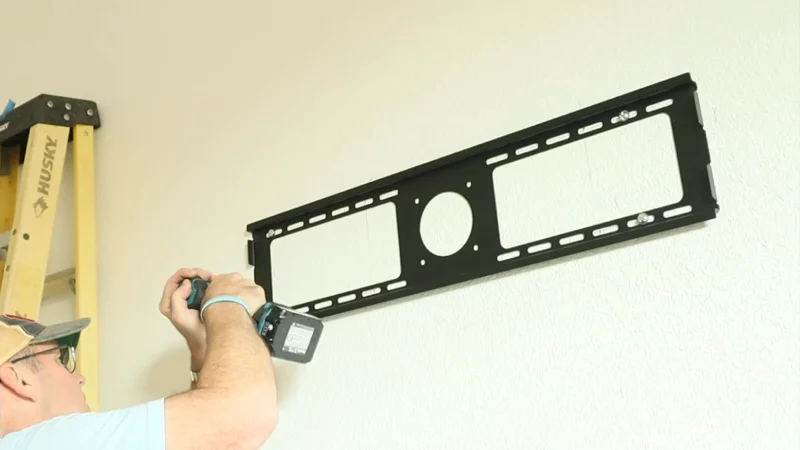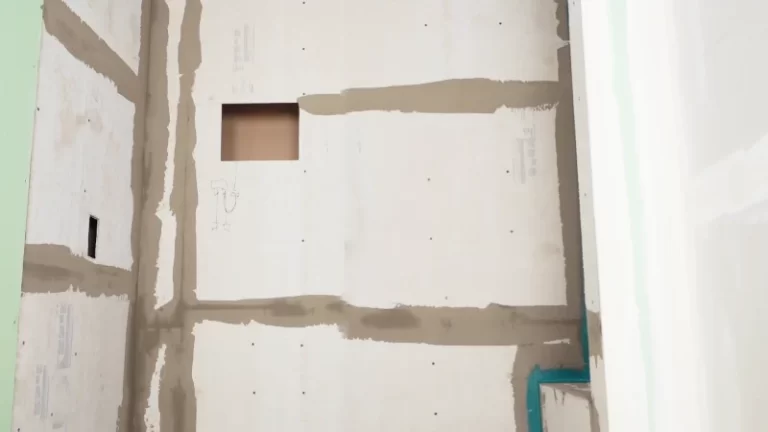How to Attach Trim to Drywall Without Studs?

Attaching trim to drywall can be a challenging task, especially if you don’t have access to wall studs to nail into. Studs provide a solid and secure backing for the trim, but what do you do if they’re not available?
In this article, we’ll explore a few different options for attaching trim to drywall without studs, including using drywall screws, adhesive, and hot melt glue. While it’s generally best to attach trim to studs whenever possible, these methods can help you secure the trim in place if studs are not an option.
You'll Learn About
How to Attach Trim to Drywall Without Studs?
If you need to attach trim to drywall without studs, there are a few options you can try:
Use Drywall Screws
Pre-drill a hole in the drywall and screw the trim into place using drywall screws. This can be effective, but the screws may not hold as well as if you were attaching to a stud.
Use Adhesive
There are several types of adhesives that can be used to attach trim to drywall without studs. One option is a paneling and molding adhesive, such as “Liquid Nails,” which is specifically designed for this purpose. Alternatively, you can try using a cove base adhesive, which is designed for commercial installations and can be easily removed later if needed.
Use Hot Melt Glue
A small amount of hot melt glue can be used to secure the trim to the drywall. This method may not be as strong as the others, but it can be effective for small sections of trim.
It’s important to note that attaching trim to drywall without studs may not be as strong as attaching to studs. It’s always best to try to attach to studs whenever possible. However, if studs are not available, these methods can help you secure the trim in place.
Option 1: Use Drywall Screws
To attach trim to drywall using drywall screws, you’ll need to pre-drill a hole in the drywall to ensure that the screw has something to grip onto. Once you’ve drilled the hole, you can then screw the trim into place using drywall screws. Be sure to choose screws that are long enough to penetrate at least 1/2 inch into the drywall.
While using drywall screws can be an effective way to attach trim to drywall without studs, it’s important to note that the screws may not hold as well as if you were attaching to studs. This is because the drywall is not as sturdy as a wood stud, and the screws may not grip as tightly.
As a result, you may need to use more screws or use screws that are longer in order to ensure a secure hold. Additionally, the screws may be more prone to stripping if they are not properly anchored.
Option 2: Use Adhesive
Using adhesive is another option for attaching trim to drywall without studs. There are several types of adhesives that can be used for this purpose, including paneling and molding adhesive and cove base adhesive.
To use adhesive, you’ll need to apply a generous amount of adhesive to the back of the trim, being sure to cover the entire surface. Then, carefully position the trim against the drywall and press it into place. You may need to use a prop or other object to hold the trim in place while the adhesive dries.
One potential drawback of using adhesive is that it may not be as strong as attaching to studs. Adhesive can lose its grip over time, especially if the trim is subjected to frequent movement or vibration.
Additionally, if you ever need to remove the trim, it may be more difficult to do so if it is secured with adhesive. However, for small sections of trim or for installations where studs are not available, adhesive can be an effective way to secure the trim in place.
Option 3: Use Hot Melt Glue
Hot melt glue can also be used to attach trim to drywall without studs. To use hot melt glue, you’ll need a hot glue gun and glue sticks. Simply apply a small amount of hot glue to the back of the trim and press it into place against the drywall.
Hold the trim in place for a few seconds until the glue has had a chance to set.
One potential drawback of using hot melt glue is that it may not be as strong as other options, such as drywall screws or adhesive. Hot melt glue can lose its grip over time, especially if the trim is subjected to frequent movement or vibration.
Additionally, if you ever need to remove the trim, it may be more difficult to do so if it is secured with hot melt glue. However, for small sections of trim or for installations where studs are not available, hot melt glue can be an effective way to secure the trim in place.
Tips for Attaching Trim to Drywall Without Studs
Here are a few additional tips for attaching trim to drywall without studs:
Use a Stud Finder to Locate Any Hidden Studs
If you’re not sure if there are any studs behind the drywall, you can use a stud finder to locate them. This can be a useful tool if you’re unsure whether or not you should use screws or adhesive to attach the trim.
Use Heavy-duty Adhesive
For larger sections of trim or for installations where the trim will be subjected to frequent movement or vibration, you may want to consider using a heavy-duty adhesive. These adhesives are designed to hold up under more strenuous conditions and may be more effective at securing the trim in place.
Use Mechanical Fasteners
In some cases, you may be able to use mechanical fasteners, such as toggle bolts or molly bolts, to attach the trim to the drywall. These fasteners can provide a secure hold, but they may be more difficult to install and may not be suitable for all types of trim.
Consider Using Trim Clips
Another option is to use trim clips, which are small metal or plastic clips that can be used to secure the trim to the drywall. These clips are easy to install and can provide a secure hold, but they may not be suitable for all types of trim.
Use a Combination of Methods
For the strongest hold, you may want to consider using a combination of methods, such as screws and adhesive, to attach the trim to the drywall. This can help to ensure that the trim is securely fastened in place and is less likely to come loose over time.
Can You Nail Trim Into Drywall?
Nailing trim into drywall is a common method for securing moldings and other decorative pieces in place. This can be done using a finish nailer, which is a type of nail gun specifically designed for this purpose.
Pros
- Ease of use: Finish nailers make it quick and easy to install trim into drywall, reducing the time and effort required to complete the job.
- Strength: Finish nails provide a secure connection between the trim and the drywall, helping to prevent the trim from falling off over time.
Cons
- Drywall damage: If not done correctly, nailing trim into drywall can cause cracks and other damage to the surface of the drywall.
- Visibility: The head of the finish nail may be visible even if the trim is painted, detracting from the overall appearance of the finished product.
Alternatives
- Adhesive: In some cases, it may be possible to use adhesive instead of nails to secure trim to the drywall. This eliminates the risk of drywall damage and provides a more discreet connection, but may not be as strong as nailing.
- Screws: Screws can also be used to secure trim to drywall. This provides a strong connection and eliminates the risk of drywall damage, but can be more time-consuming to install than nails.
Nailing trim into drywall is a quick and easy way to secure moldings and other decorative pieces in place, but there are both pros and cons to consider. By understanding the advantages and disadvantages of this method, you can make an informed decision about the best approach for your particular situation.
Conclusion
In conclusion, there are several options for attaching trim to drywall without studs. These include using drywall screws, adhesive, and hot melt glue. While it’s generally best to attach trim to studs whenever possible, these methods can be useful if studs are not available.
Just be aware that these methods may not be as strong as attaching to studs, and you may need to use more screws or adhesive to ensure a secure hold. If you’re ever in doubt about the best way to attach trim to drywall, it’s always a good idea to consult a professional or refer to the manufacturer’s instructions for guidance.




![R-30 Insulation 2×8 [Everything You Need to Know]](/wp-content/uploads/2023/01/R-30-Insulation-2x8-1-768x432.webp)